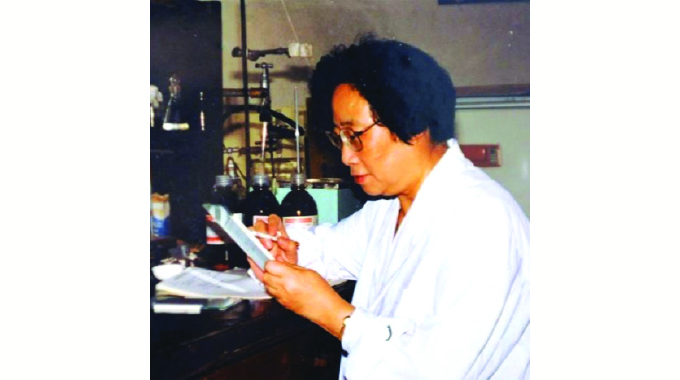Women hold up half the sky: How Chinese females make a difference

Wei Shi
Along with the rapid economic growth and significant social development over the past decades, China has made much progress in gender equality and women’s empowerment.
According to the United Nations Development Programme (UNDP), from 1990 to 2021, the Human Development Index (HDI) value for Chinese women increased by 72.2 percent from 0.442 (low) to 0.761 (high).
Additionally, in 2021, China’s Gender Development Index (GDI) value rose to 0.984, an increase from 0.873 in 1990. This is an indication that gaps between women and men are narrowing in education, health and command over economic resources.
Since 1995, China has initiated its first multi-year national programme for women’s development, specifying the national strategies and action plans to advance women’s rights and interests in key areas such as economic contribution and women’s participation in decision making and management, education, health and legislation.
This has also been incorporated into national development policies and plans. In September 2021, the Chinese Government carried out its fourth national programme for women.
This is a programme for the development of Chinese women (2021-2030), formulating and implementing policies and measures to protect women’s rights and interests and ensure their all-round development in the new era.
The Chinese government does not stop the pace of improving the social status of women, including equal pay and employment, women’s representation in the economic and technology sectors, equal access to productive resources and services, as well as women’s participation in local governance.
China is also the practitioner, promoter and contributor to the global cause of women.
As the signatory to the Convention on the Elimination of All Forms of Discrimination against Women (CEDAW) in 1979, the member of the United Nations Commission on the Status of Women (UNCSW) and the host country of the 4th United Nations World Conference on Women, China has been actively implementing the Beijing Declaration and Platform for Action adopted at the aforementioned conference in 1995 as well as goals regarding gender equality and women’s development in the 2030 Agenda for Sustainable Development.
As China develops a series of measures, legal frameworks and programmes to promote women’s equal rights and opportunities, women in China have the chances to tap their full potentials to realise their own values.
They should not be viewed as the caretakers of children and elders, but the game-changers of national development and enablers for advancement and welfare of humanity at large.
Tu Youyou: a pharmaceutical chemist bringing hope to people suffering from malaria. Tu Youyou was born in 1930 in eastern China. Her family stressed education for her, but she had to take a two-year break from studying at 16 because she had contracted tuberculosis.
When she returned to school, she knew exactly what she wanted to study: medicine. She wanted to find cures for diseases like the one that had afflicted her.
Tu studied pharmacology, learning how to classify medicinal plants, extract active ingredients and determine their chemical structures at Beijing Medical College.
She was assigned to work at the newly established Academy of Traditional Chinese Medicine after graduation. She took a full-time course in traditional Chinese medicine and would stay for her entire career.
In the late 1960s, Tu was assigned to find a cure for chloroquine-resistant malaria. Her first order of business was researching the effects of malaria in situ.
For that, she led a team to Hainan Island in southern China, which was currently experiencing a malaria outbreak of its own. In those rainforests, Tu witnessed the disease’s devastating toll on human body.
Upon their return to Beijing, the team reviewed ancient medical texts to understand traditional Chinese ways of fighting malaria.
After testing over 240 000 compounds for use in potential antimalarial drugs, Tu’s team found a reference to sweet wormwood, which had been used in China around 400 AD to treat “intermittent fevers”, a symptom of malaria.
Tu ultimately extracted a compound, artemisinin, that has saved millions of lives. When she isolated the ingredient she believed would work, she volunteered to be the first human subject.
It took two decades, but finally the World Health Organisation (WHO) recommended artemisinin combination therapy as the first line of defence against malaria.
The Lasker Foundation, which awarded Tu its Clinical Medical Research Award in 2011, called the discovery of artemisinin “arguably the most important pharmaceutical intervention in the last half-century”.
Tu, for her part, was reluctant to take credit. She deflected praise towards her colleagues from modern and ancient China.
In 2015, Tu was awarded the Nobel Prize for physiology and medicine and became the first mainland Chinese scientist to receive a Nobel Prize in scientific category.
She said in her Nobel acceptance speech entitled “Discovery of Artemisinin: A Gift from Traditional Chinese Medicine to the World”, “Chinese medicine will help us conquer life-threatening diseases worldwide, and that people across the globe will enjoy its benefits for health promotion.
“Artemisinin is a true gift from old Chinese medicine. But this is not the only instance in which the wisdom of Chinese medicine has borne fruit.”
She was also proud of her discovery, “Every scientist dreams of doing something that can help the world.”








Comments